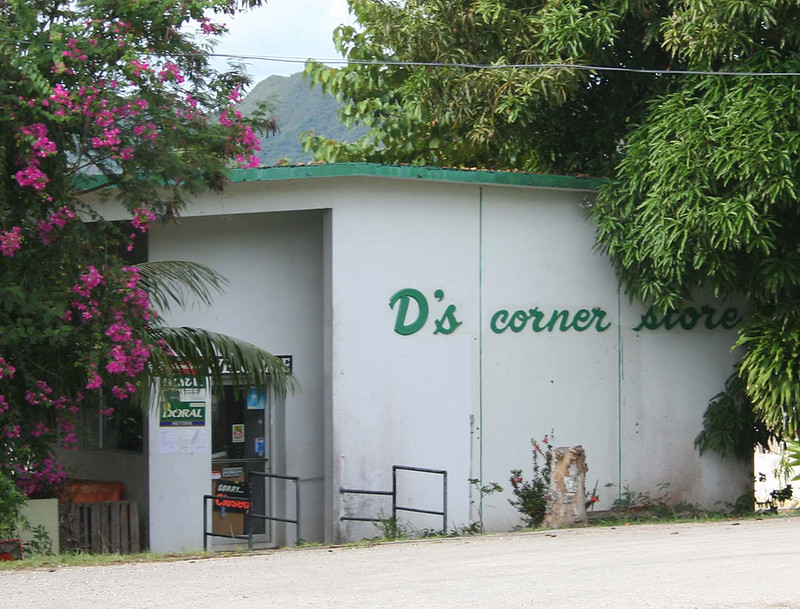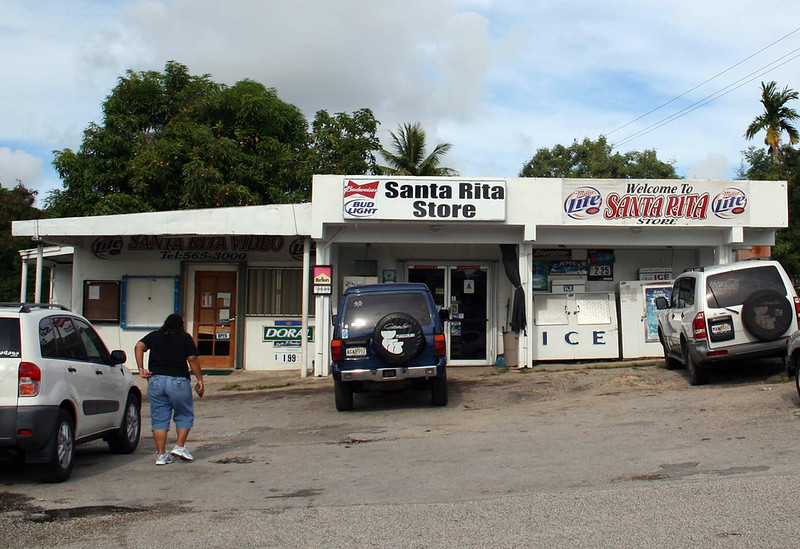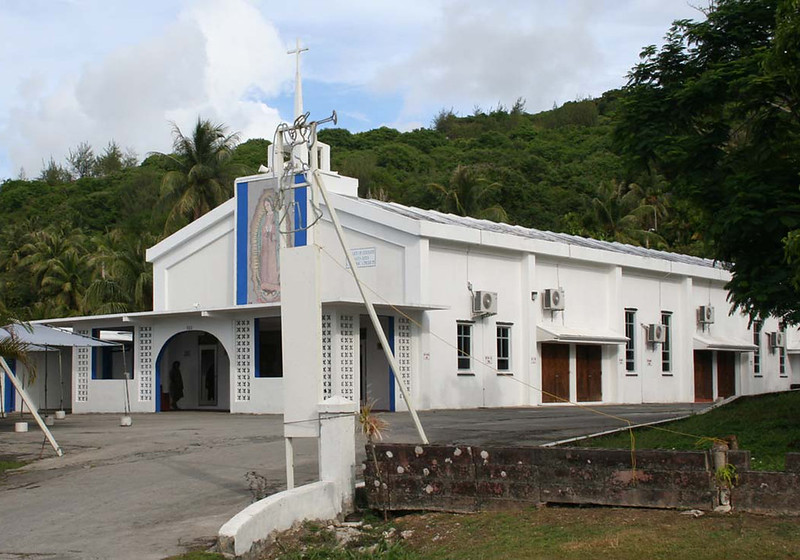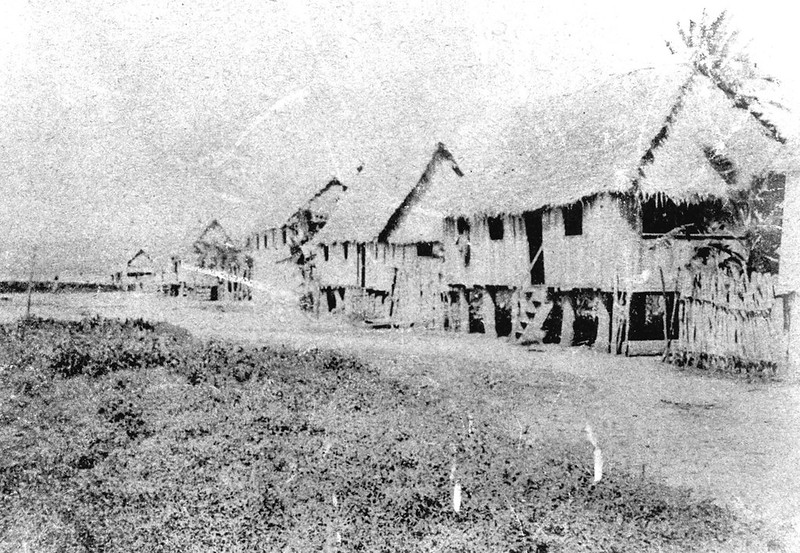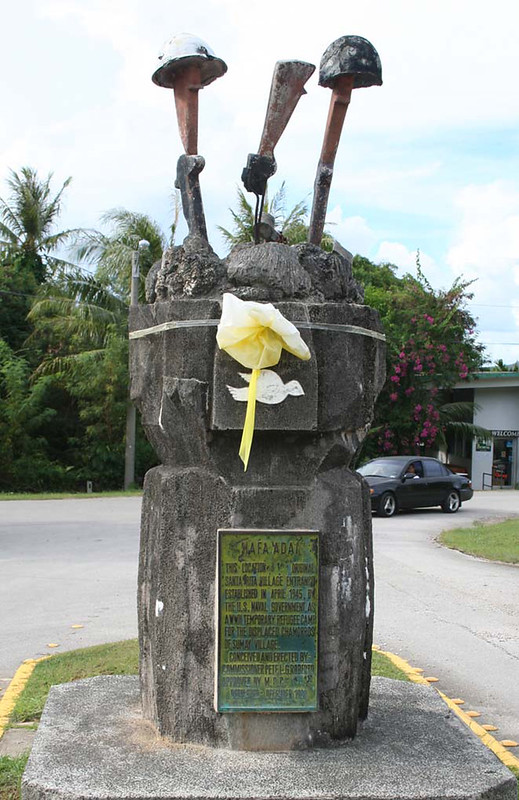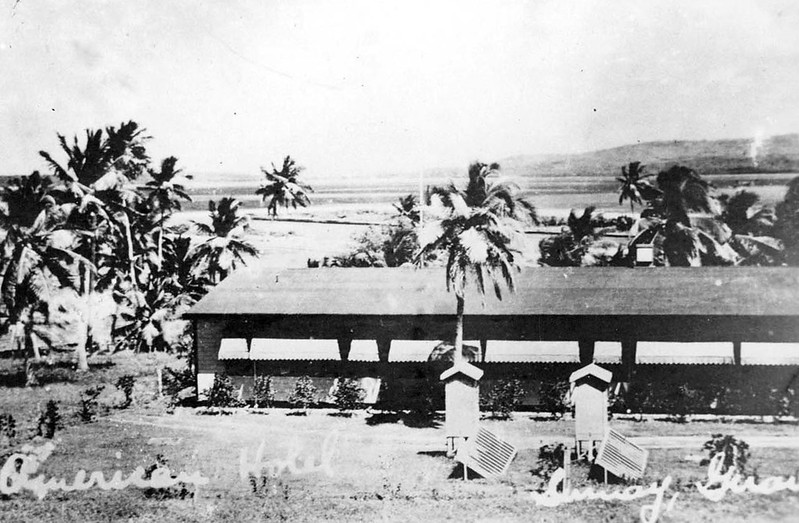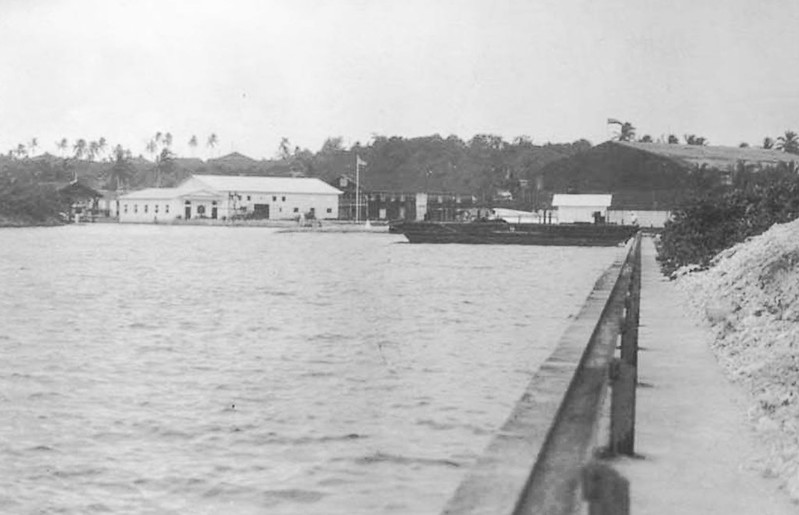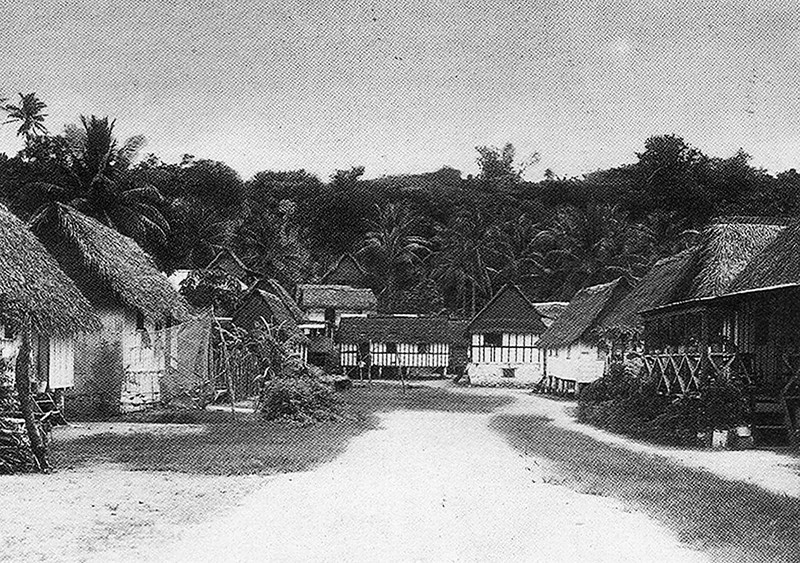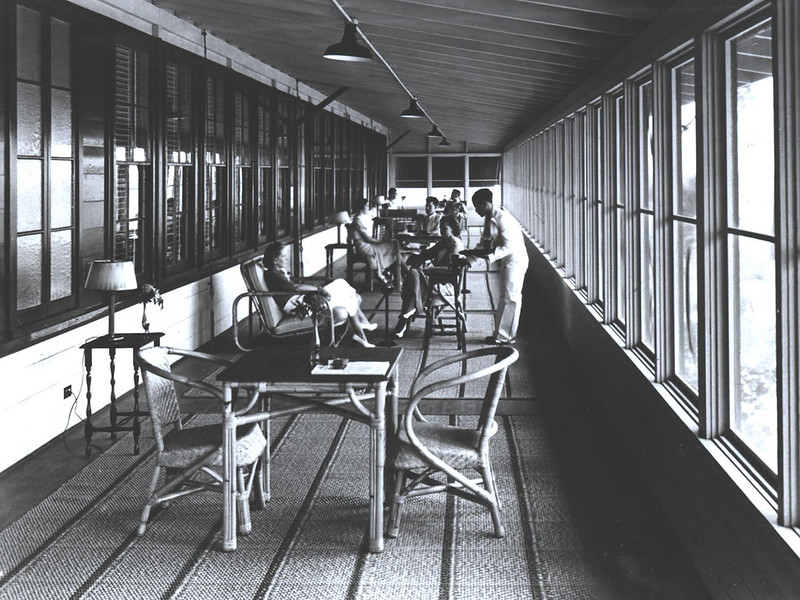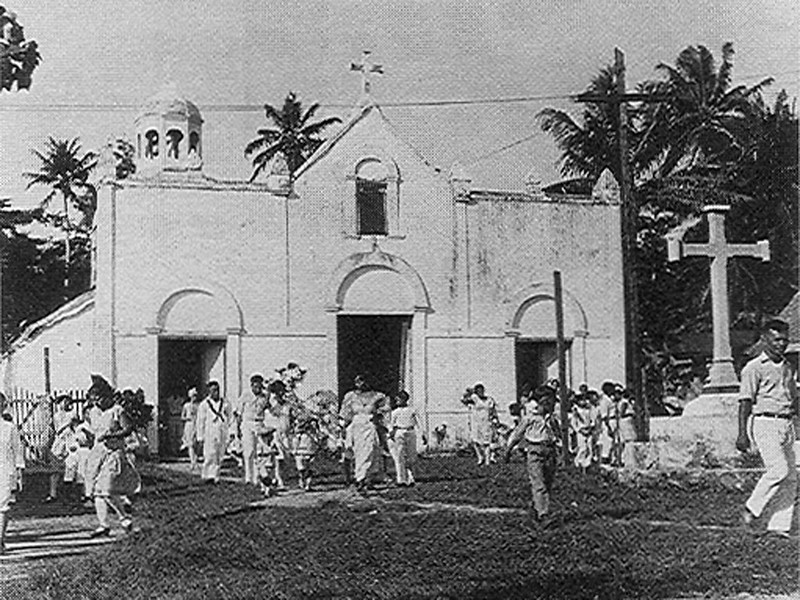Sånta Rita-Sumai (Santa Rita)
Origin of village name in CHamoru
Sånta Rita-Sumai is one of two villages that does not have a name derived from the CHamoru language. The other is Tamuning, a Carolinian word given to the area that was a temporary settlement for Carolinians in the 17th century.
Sånta Rita-Sumai’s village name is taken from its patron saint, St. Rita of Cascia. The village was established in 1945 to accommodate the residents of Sumai village on Orote Peninsula who were evicted by Japanese occupying forces and the US Navy during World War II. Sumai was added to its name in 2021 to recognize the village’s evolution from the pre-war village of Sumai.
Population
As of the 2010 US Census, the population was 6,084, but with another 6,000 transient military residents that live in military housing within the boundaries of Sånta Rita-Sumai, that number increases to about 12,084.
Village officials
Dale E. Alvarez became the Mayor of Sånta Rita-Sumai on 6 January 2009.
Village description
The village of Sånta Rita-Sumai proper, not including the military housing areas, Naval Station and Naval Magazine, is one of the smallest, quietest, and least modernized villages on Guam. There are two small stores – D’s Corner Store, Sånta RitanStore , and the Sånta Rita Video Store adjoined to the Sånta Rita Store within the main village. The village is surrounded by natural water sources. It’s boundary with Yona is marked by Tarzan Falls, while its border with Talo’fo’fo is in the vicinity of Fena Lake. Sånta Rita-Sumai’s border with Piti lies along the Guatali river, while it shares a border with Hågat along the Namo River. The village flower, previously the gardenia, has recently been changed to the ginger because of its present abundance throughout Sånta Rita-Sumai.
Most of the village’s activities revolve around the church, Our Lady of Guadalupe Church, as well as the Mayor’s Office and Senior Citizens Center, and the baseball field that lies between them. Most of the families in the village have been there since it was built, just after the war, so most of the residents know each other or at least see one another at church every Sunday.
The Fena Reservoir in Sånta Rita-Sumai, located within the gates of Naval Magazine, was completed in 1951 with the intent of providing a dependable water supply to the US Navy on Guam. It now serves as the main drinking water supply to a considerable portion of the southern region of the island. The reservoir is also home to a large population of carabao, once valued as an important animal for farm labor and transportation that has now become a cultural and historical icon on Guam. To support growing demand for water, a $1.5 million upgrade was completed in 2007 on the Sånta Rita-Sumai Springs Booster Pump.
The more recent addition of the Santa Rosa housing subdivision, known by many residents as “Hyundai,” expanded the village somewhat. When Southern High School was built across from Harry S. Truman Elementary School and near Hyundai, the school and the more developed road that was built to the school increased traffic through that part of the village.
The Department of Public Health and Social Services Sånta Rita-Sumai Region Health Center is also located in the village providing services under the Special Supplemental Nutrition Program for Women, Infants, and Children, better known as the WIC Program. The Sånta Rita-Sumai Senior Citizens Center was completed in 2004 and provides recreational and support services for the village’s manåmko’, or elderly. The center overlooks what was once Sumai where most of the manåmko’ in Sånta Rita-Sumai originate.
As many areas in the village allow for a spectacular view of Apra Harbor, which is beautifully lit up at night, a number of homes have been built in recent years, prominently among the sparse community in the hills of Cross Island Road.
Village history
The history of Sånta Rita-Sumai starts in the ancient village of Sumai, a small village on Orote Peninsula, whose residents were evicted from the village during the Japanese occupation of World War II before eventually being relocated by the Americans to the current village of Sånta Rita-Sumai to make room for the construction of Naval Station. Being the first village bombed during the invasion of Guam by Japan on 8 December 1941, the residents of Sumai took refuge in the outlying area of Åpla where many families had ranches. Most would remain there for the duration of the occupation.
As American troops made advancements toward the retaking of Guam in 1944, many of the Sumai residents, as well as many from neighboring Hågat, took shelter in the Fena caves located in what is now the municipality of Sånta Rita-Sumai. As American forces built up in the waters near Guam, Japanese soldiers one day forced more than one hundred Sumai and Hågat people taking refuge at Fena into the caves, many of them in their late teens and early 20s. Many of the women were repeatedly raped, and many of the men and women were killed in the caves by hand grenades, machine guns, and bayonets. On the next morning, dozens of prisoners escaped into the jungle, although some were killed as they fled.
A memorial Mass was held each year at the Fena caves to commemorate those who died there, but post-9/11 security has closed the area off as it is located within the perimeter of Naval Magazine. The annual memorial Mass is now held at the Our Lady of Guadalupe Church in Sånta Rita-Sumai.
In the battle to recapture the island, the American forces completely destroyed Sumai. When the US forces regained control of the island, the people of Sumai were still to be moved, resulting in the naval government’s construction of a temporary settlement of wooden houses with thatched roofs for the Sumai residents at the Sånta Rita-Sumai site. Although this site was supposed to be temporary, the majority of Sumai residents chose to remain in Sånta Rita-Sumai because they were exhausted from being forced to constantly relocate during the war. They were also forbidden to resettle in their old village by the Navy, which expropriated Orote Peninsula and all other property in and around Apra Harbor, including the entire village of Sumai. The land where Sumai once sat is now part of Naval Station.
The once coastal people of Sumai now made their home in the foothills of Mount Alifan, which are not well suited for farming or fishing. The contour and slopes of the mountains made lot apportionment difficult. Many of the postwar houses can still be seen today within the edges of the precipices and deep chasms of Sånta Rita-Sumai, raised on stilts to avoid the floods during heavy rains and to keep pests and other animals out of the house.
The people of Sumai worked to establish the community of Sånta Rita-Sumai throughout the 1950s. Together, and with the help of the US Navy, religious leaders, and leaders throughout the island, they were able to construct a village that resembles many of the older villages on the island.
In recent years, Sånta Rita-Sumai has expanded to include the lower areas of Talisay, the Hyundai Santa Rosa housing subdivision, all the military housing in Naval Station, Naval Magazine and Old and New Apra Heights.
Points of interest
Village map
Institutions
Our Lady of Guadalupe Church
This Catholic church was established on 7 December 1952. The village holds two processions and fiestas, or feast day celebrations: one for the village’s patron saint of Sånta Rita-Sumai, in May and another for the church’s patron saint of Our Lady of Guadalupe, in December. Our Lady of Guadalupe was the patron saint of Sumai and devotion to this saint has been carried on by the people of Santa Rita. Other churches in Sånta Rita-Sumai include the Church of Latter Day Saints (Mormon) and Iglesia Ni Cristo.
Southern High School
This school is the largest high school on Guam. It includes among its expansive campus two baseball fields, a football field/track, a large gym, an Olympic swimming pool and an auditorium, although the gym, auditorium, and swimming pool are not in usable enough condition. While there are plans to repair the gym, full repairs to all the facilities have not been made for years due to lack of government funds. Southern High’s district encompasses the entire southern region of Guam, from Yona, Sånta Rita-Sumai and Hågat to Humåtak and Malesso’.
Harry S. Truman Elementary
Near Southern High, which is next to the Hyundai Santa Rosa subdivision, is Harry S. Truman Elementary.
JP Torres Alternative School
In the main village, JP Torres Elementary was recently converted to an alternative school.
Recreational
Namo Falls Tropical Garden
In the middle of the village are two waterfalls that have been turned into a quiet spot surrounded by tropical flowers, jungle foliage, and some homes often visited by tourists, who are given a taste of tropical fruits. The site is not open to the public as of February 2019, according to Mayor Alvarez.
Village mayors/commissioners
Mayors/Commissioners
- Dale E. Alvarez, Mayor, 2009 – Present
- Joseph C. Wesley, Mayor, 1997-2008
- Gregorio M. Borja, Commissioner/Mayor, 1989-1997
- Pedro LG Roberto, Commissioner, 1985-1989
- Juan N. Perez Commissioner 1973-1985
- Pedro LG Roberto Commissioner 1969-1973
- Joaquin D. Perez Commissioner 1952-1969
- Juan N. Perez Commissioner 1945-1952
Commissioners for the municipality of Sumai
- Juan P. Sarmiento, Commissioner, 1939-1941
- Vicente D. Lizama, Commissioner, 1937-1939
- Gregorio S. Borja, Commissioner, 1935-1937
- Tomas P. Sablan, Commissioner, 1931-1935
- Vicente T. Borja, Commissioner, 1930
- Joaquin C. Diego, Commissioner, 1927-1930
Deputy Commissioners
- Vicente S. Borja, Deputy Commissioner, 1938-1939
- Jesus C. Cruz, Deputy Commissioner, 1935-1937
- Felix C. Babauta, Deputy Commissioner, 1931-1935
| Editor’s note: | The preceding list was provided by Konsehelon Mahot Guåhan/the Mayor’s Council of Guam. |
|---|
For further reading
Mayors Council of Guam. “MCOG – Mayors Council of Guam.”
Onedera, Peter R., ed. Nå’an Lugåt Siha gi ya Guåhan (Guam Place Names). Hagåtña: Chamorro Language Commission, 1988.
Know my island – Know my history
Pre-War village of Sumai
Sumai’s history dates before the Spanish colonial period, although not much is known about its pre-contact history. Findings in a cave complex in the old village site suggest that ancient CHamorus dwelled in them long before the Spanish first arrived. When the Spanish proclaimed Guam as theirs, Sumai’s chieftain was said to be among those who held strong opposition to the Spanish colonizers, although the Spanish government eventually gained control. Sumai, like other villages, became centered around the Catholic church.
The Spaniards kept a settlement at Sumai, and its easy access to San Luis de Apra Harbor made it a favorite anchorage town for whalers and other sailors. Sumai grew into a thriving little port town in the 1800s. The Spaniards fortified the high cliffs behind the village and other points to protect the harbor. The guns were in disrepair, however, when the Americans sailed into Apra to capture Guam without resistance during the Spanish-American War in 1898.
The Americans also fortified the same cliff line after World War I and stationed a Marine Corps Aircraft Squadron in the area because of suspicions of Japan, which had gained the Northern Marianas after the war. However, the US dismantled the fortifications on Guam in the early 1920s.
Much of the naval shipping operations were situated along this coastal village when the American government took over. The Trans-Pacific Cable Company anchored its station at Sumai in 1903, linking Guam with both Asia and the United States. Pan American Airways landed its China Clipper at Sumai in 1935, and built Guam’s first hotel there.
A seawall that surrounded the coastline was constructed to protect it from the pounding waves, and many of the residents enjoyed fishing and swimming along the coast every day. The Maxwell School was also constructed in the early 1930s, a small building that educated most of the children of the area. As of the 1920 census, the population of Sumai was 1,209, the second-highest population after Hagåtña. In 1923, the village became the site of Guam’s first golf course, the Sumai Golf Links, with 18 holes.
Sumai’s well-known representative in the Guam House of Assembly was Antonio B. Won Pat, a schoolteacher whose family was from the village. Won Pat became speaker of the House of Assembly in 1948 and would go on to become the first speaker of the new Guam Legislature in 1951 and Guam’s first delegate to US Congress in the 1960s – and the island’s most influential politician for several decades. Won Pat’s successor as Guam delegate to the US Congress, Gen. Ben Blaz, was also from Sumai.
Because military shipping and communications centered around Sumai, it was one of the first areas to be bombed when the Japanese attacked on 8 December 1941. The people of Sumai fled and scattered inland to their small ranches in the jungles, with many families becoming separated. The entire population of Sumai was promptly evicted by the Japanese in the first few days of occupation to make room for a Japanese garrison, and five CHamoru girls were raped by Japanese troops in the takeover. The residents were eventually moved from camp to camp by the Japanese, some as far as Merizo and Mannengon hills in Yona.


